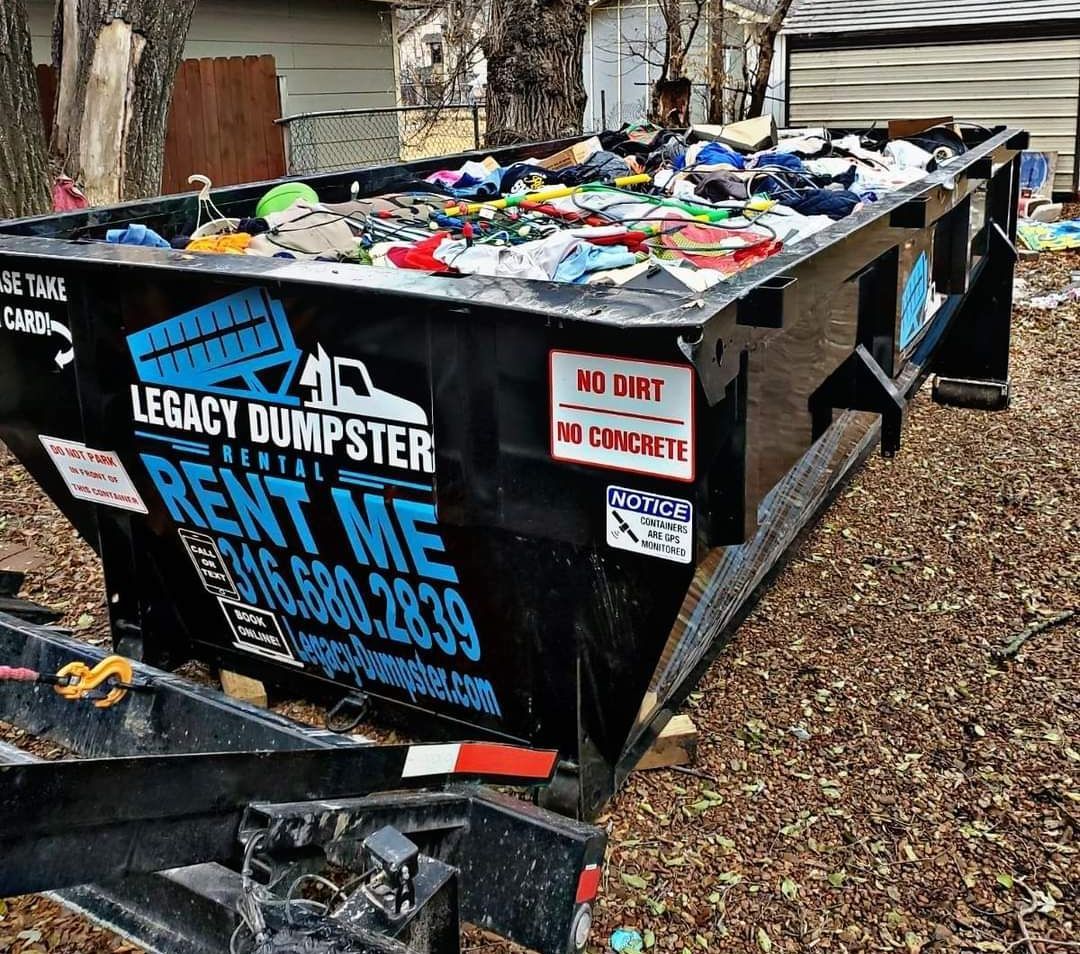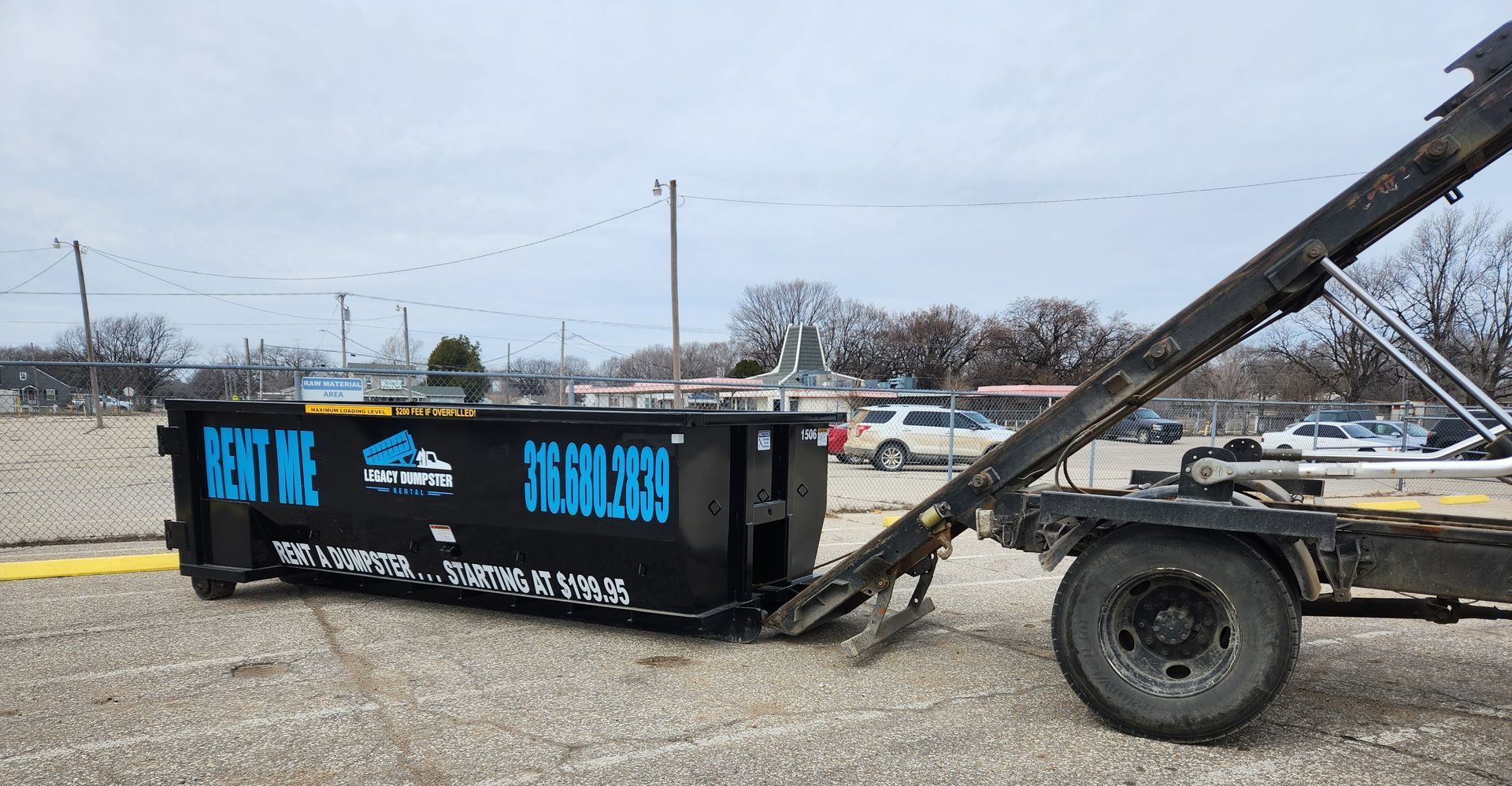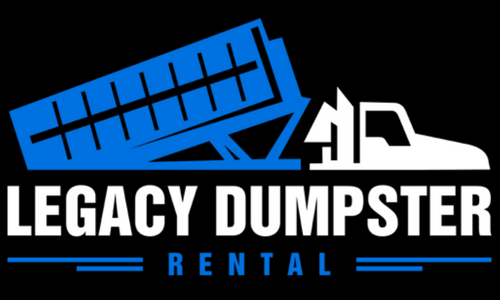How To Load A Dumpster Guide
Step By Step Instructions On Loading a Dumpster
Welcome to
Legacy Dumpster Rental's guide designed to help you load your dumpster in the most efficient and safe manner possible. Whether you're clearing out junk, tackling a renovation project, or dealing with construction debris, knowing the right way to fill your dumpster can save you time, maximize your space, and avoid additional fees.

How To Load A Dumpster - Step By Step
Never loaded a dumpster before? Good news! Follow these steps on how to load a dumpster to make the process as easy as possible:
- Step #1: Select the Right Spot
Choose a convenient, accessible location on solid, level ground for the dumpster. This ensures safety and ease of loading from the start.
- Step #2: Double-Check Prohibited Items
Before loading anything, review the list of prohibited items to prevent including materials that could incur fines or require removal.
- Step #3: Prepare Your Items
Sort and organize your items by size, weight, and material type. This helps in planning how to fill the dumpster efficiently.
- Step #4: Equip for Safety
Wear appropriate safety gear, including gloves, goggles, and sturdy boots, to protect against potential hazards during loading.
- Step #5: Start with Heavy and Large Items
Load the largest and heaviest items first to create a stable base, distributing them evenly across the dumpster's bottom.
- Step #6: Dismantle Large Items
If possible, break down furniture and other large items to maximize space and fit more debris into the dumpster.
- Step #7: Fill in Gaps
Use smaller items to fill the spaces between larger ones, which helps to utilize every available inch of space in the dumpster.
- Step #8: Distribute Weight Evenly
As you load, periodically check to ensure weight is evenly distributed to prevent shifting and potential issues during transport.
- Step #9: Keep it Level
Aim to keep the waste level with the top edge of the dumpster, avoiding overfilling to comply with transport and safety regulations.
- Step #10: Final Inspection and Adjustment
Before the pickup, do a final check to ensure everything is within the dumpster's limits, adjusting as necessary to avoid extra charges or delays.
By following these steps, you transition smoothly from an empty dumpster to one that's efficiently packed and ready for hassle-free pickup, ensuring a satisfactory experience for both you and the pickup crew at
Legacy Dumpster Rental.
See what not to do when filling up a dumpster
What Not to Do When Loading a Dumpster
When filling your dumpster, avoiding common mistakes can save you from potential fees, ensure safety, and make the process smoother. Here are critical dont's to keep in mind:
- Don't Overload
Resist the temptation to fill the dumpster beyond the top edge or fill line. Overloading can lead to additional charges and complications during pickup.
- Don't Dispose of Prohibited Items
Familiarize yourself with the list of items that cannot be thrown into the dumpster, such as liquid paint, oil/liquids, hazardous waste, batteries, and metal/plastic drums. Disposing of these materials improperly can result in additional charges.
- Don't Ignore Weight Limits
Each dumpster has a weight limit based on its size and the type of debris it can hold. Exceeding this limit due to improper material disposal can incur significant overage fees.
- Don't Forget to Plan for Heavy Items
Loading heavy items without planning can lead to inefficient use of space and make it difficult to fill the dumpster evenly. Always start with heavy items at the bottom and plan their placement.
- Don't Leave Items Hanging Over the Sides
Items protruding beyond the dumpster's edges can pose safety risks and may violate transportation laws. Ensure all debris is contained within the confines of the dumpster and don't exceed the top or the sides of the dumpster.
- Don't Fill the Dumpster Without Prioritizing Space
Randomly throwing items into the dumpster without considering the best way to use the space can result in inefficient packing and wasted capacity. Always break down items if possible and fill gaps wisely.
By avoiding these common pitfalls, you can ensure that your dumpster loading process is both efficient and compliant with all regulations, avoiding unnecessary complications or costs.
Still have questions?
Reach out to us!

WE HAVE A DUMPSTER FOR EVERY PROJECT

